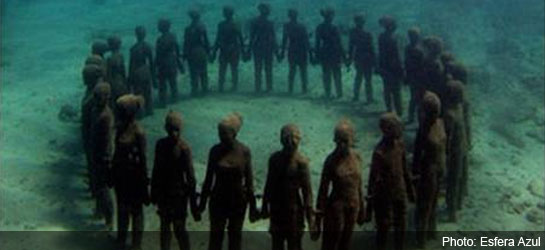
Seventy-one divers congregated Saturday in the small Caribbean Colombian fisherman’s village of Taganga in the northern department of Magdalena, to extract trash and other “foreign objects” from the ocean floor. The garbage, which ranges from plastic bottles to bicycle tyres, will be used to build the Tayrona underwater park.
Trash into treasure
“Next week, the second phase begins,” Jose Felipe Mesa, the project leader and founder of the charitable Fundacion Prosperar, told Colombia Reports. “Artists will begin selecting materials from the refuse we extracted to make the sculptures.”
While other materials such a steel will form the bulk of the statues, trash will be integrated into their structure.
“The aim is to educate,” Mesa continued. “In particular we hope that the brands manufacturing the products which people throw on the beach and in the sea take note. Firstly, we hope they will do more to educate their consumers of the effect of littering. Secondly, we hope that they will support ecological initiatives like ours.”
Mesa, who works as a management consultant in the city of Barranquilla, plans to organize exhibitions of the sculptures in Medellin’s Parque Explora and in Bogota, before beginning to submerge them in the Taganga bay in about two months time.
Once the underwater park is in place, beginner divers will learn to dive amongst the statues. Mesa expects this experience to alert them of the need to protect the underwater world, and hopes they will be encouraged to take part in conservation projects, such as the one which took place this weekend.
For a glimpse of what the underwater park is expected to look like click here to view a similar exhibition set up in Cancun Mexico.
Operation lionfish
After diving in the murky, littered waters of Taganga bay, the 71 divers involved in the project headed Sunday to dive sites in the Tayrona National Park.
Their mission was to hunt and kill lionfish, a pest which has rapidly invaded Colombian waters from the north and decimated populations of reef fish.
Using foot-long harpoons and netted bags, the divers killed a total of 132 of the colorful venomous creatures over two forty-five minute dives. Their catch was then donated to the Santa Martha campus of the Jorge Tadeo Lozano University for research purposes.

